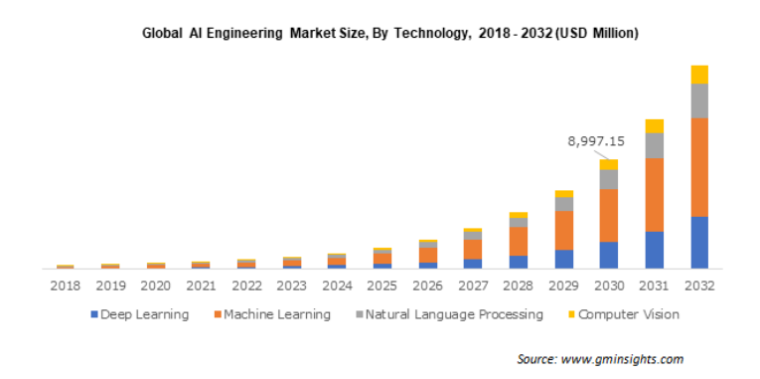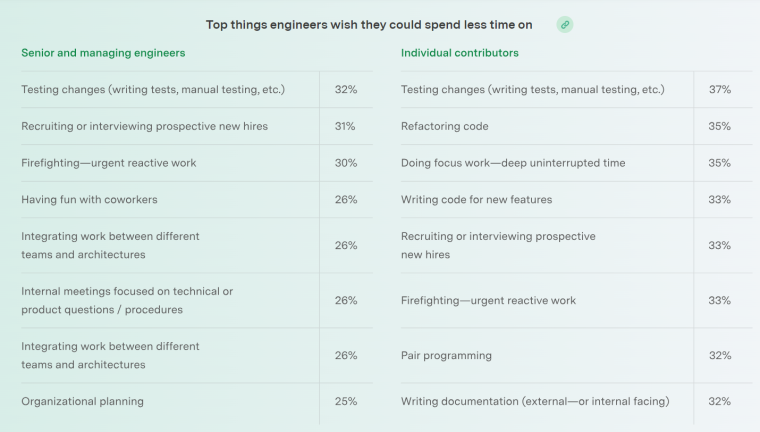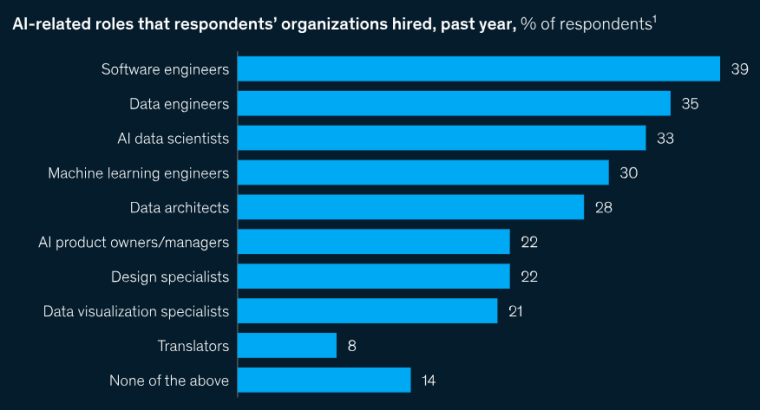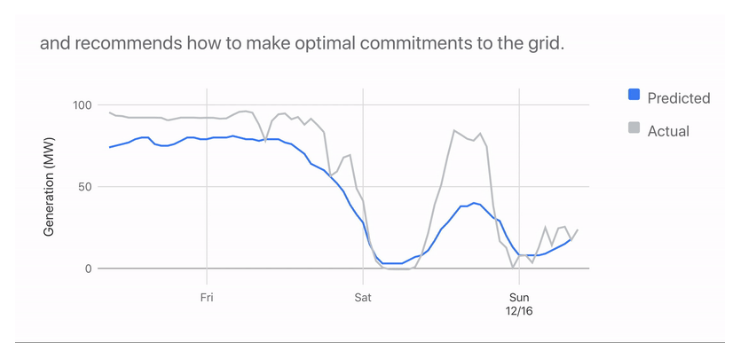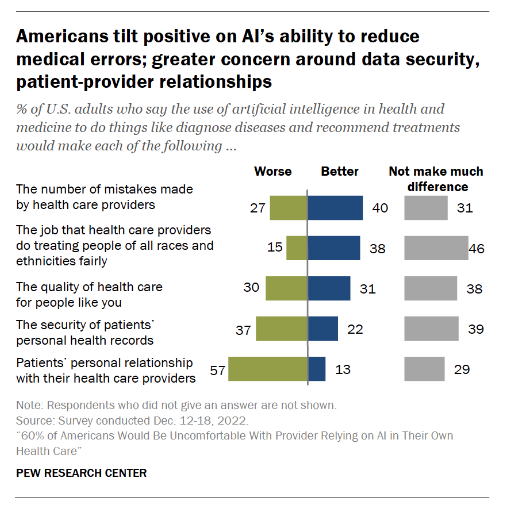The infusion of artificial intelligence (AI) into engineering processes is driving innovation across industries.
As businesses are recognizing AI’s potential to streamline operations, optimize supply chains, and transform decision-making, engineering processes are developing at a rapid pace.
Here, we have consolidated insights and statistics from reports, studies, and platforms all over the internet to bring you a coherent and comprehensive understanding of the role of AI in engineering in 2024.
Artificial Intelligence (AI) in Engineering Highlights
- By 2032, the global AI engineering market is expected to be worth US$180 billion.
- 48.5% of the current market value comes from the machine learning segment.
- Of companies already using artificial intelligence, 39% hired software engineers in the last year, making this the most sought-after artificial intelligence engineering job.
- 60% of Americans are uncomfortable with the idea of their healthcare provider relying on AI.
- AI-powered predictive maintenance algorithms can reduce machinery downtime by as much as 50%.
Key Takeaways: The Revolution of AI in Engineering
- Growth Trajectory: The global AI engineering market is projected to reach a monumental $180 billion by 2032, with significant contributions from machine learning and deep learning sectors.
- Labor Dynamics: A significant challenge within the sector is the recruitment of skilled AI engineers, with many companies finding it difficult to fill these high-demand roles.
- Practical Applications: AI’s integration is becoming essential in sectors like manufacturing and aerospace, where it enhances efficiency and predictive maintenance.
- Public Perception: There is a notable caution among the public regarding AI, particularly in sensitive areas like healthcare, which affects adoption rates.
How is Artificial Intelligence (AI) Used in Engineering?
In 2022, the global AI engineering market was worth $8 billion, according to Global Market Insights. 48.5% of this market value came from the machine learning (ML) segment, and 30% from the hardware segment.
It is predicted that the global AI engineering market will grow at a CAGR of approximately 35% over the next 10 years, reaching a value of $180 billion by 2032.
The AI engineering market is broken down into four main areas in the Global Market Insights report. These are, in order of predicted size in 2032:
- Machine learning
- Deep learning
- Natural language processing
- Computer vision
Some of these AI use cases in engineering are simple enough for nearly any employee with no experience in AI can operate like basic large language models whereas others may require a dedicated analysis or data science team.
In Europe, the UK took the greatest share of the AI engineering market in 2022, followed by Germany, France, Italy, and Spain.
26.4% of the global market value came from North America in 2020, according to Emergen Research. This report identifies the following key drivers of growth in the AI engineering market over the coming decade:
- Automation of operational activities to improve productivity and reduce human error
- Big data for use in decision-making
- Specialized artificial intelligence chips to enhance the performance of algorithms
Machine Learning
ML is a field of artificial intelligence in engineering where algorithms learn from data to make predictions or decisions without being explicitly programmed.
Here are some key areas where machine learning models are already being used:
- Manufacturing: AI systems and IoT devices offer improved efficiency through complex statistical analysis leading to enhanced production operations and reduced downtime.
- Material science: An example of AI in chemical engineering is using tools to identify new materials and better understand the qualities of existing materials through examining data from simulations and tests.
- Aerospace: Reduced emissions and fuel consumption and improved aircraft design through analyzing and evaluating data obtained from flight simulations and wind tunnel tests.
- Testing and simulation: Automated tests reduce quality control time and improve the analysis that comes from the testing process.
In The 2022 State of Engineering Time report from Retool, over a third of software and AI engineers said they wished they could spend less time on testing changes (including writing tests and running manual tests). 32% of senior and managing engineers and 37% of individual contributors cited this as the top thing that they would prefer to spend less time on.
AI can help an AI engineer with this aspect of software engineering; WeSoftYou reports that AI-powered tools can help reduce the time spent testing and debugging by up to 70%.
Future Market Insights forecasts that the market for AI-enabled testing tools will be worth $426.1 million in 2023 and will grow at a CAGR of 16.9% to reach $2.03 billion by 2033. The codeless testing market is set to experience a slightly slower CAGR of 15%, increasing from $2 billion in 2023 to $8.45 billion in 2033. The automation testing market, meanwhile, will grow from $29.31 billion to $166.91 billion over the same time period; a CAGR of 19%.
Deep Learning
Deep learning is a subset of machine learning that employs neural networks with multiple layers to automatically extract hierarchical features from data, enabling it to solve complex tasks and achieve high levels of accuracy.
Here are some ways that deep learning is used in everyday applications:
- Transportation: Improving the safety and performance of autonomous vehicles by making more accurate predictions.
- Virtual assistants: Alexa, Siri, Cortana, Google Assistant, and the like should become more helpful the more you use them, thanks to deep learning algorithms that adjust their behavior based on previous interactions.
- Fraud prevention: By understanding typical user behavior, finance companies can more easily detect and block anomalies that are likely to be fraudulent.
Big Data Analytics
Big data analytics involves collecting, processing, and analyzing large volumes of diverse and complex data to extract valuable insights, patterns, and trends that can inform decision-making and drive business or research advancements.
Artificial Intelligence Engineering Hiring Statistics
McKinsey’s State of AI in 2022 report sheds some light on the AI engineering roles that companies are already recruiting for. Of the organizations surveyed, which spanned a broad range of industries, sizes, and functions, 50% said they had adopted AI in at least one function in the past year.
Engineering features in three of the top four AI-related roles that these organizations have been hiring for. 39% said they had hired software engineers, 35% had hired data engineers, and 30% had hired ML or AI engineers.
The survey also found that companies are finding it difficult to hire for these roles. The percentage of respondents that found it “somewhat difficult” or “very difficult” to hire for these AI-related roles is as follows:
- Software engineers: 65%
- Data engineers: 69%
- Machine learning or AI engineers: 70%
Around 50% of companies hiring for these roles said it had become more difficult to acquire this talent in the past three years.
According to Stanford’s 2023 AI Index Report, AI job postings in the US for software engineers increased by almost 500% between 2010-12 and 2022, jumping from 22,384 to 133,286.
Who Is Using Artificial Intelligence in Engineering?
Google / Deep Mind: Wind Farm Efficiency
Wind farms are becoming an increasingly important source of renewable energy as the price of turbines has decreased significantly. The average cost of a wind turbine in the US dropped from $1,800/kW in 2008 to $770–$850/kW in 2020, and it’s predicted that the price will decrease by a further 37%–49% by 2050, according to the US Department of Energy.
Unpredictability, a long-standing issue in wind turbine efficiency, is being combated by Google’s research subsidiary DeepMind.
Using a neural network trained on historical data, the DeepMind system can now accurately predict wind power outputs 36 hours in advance.
The result is that wind energy is approximately 20% more valuable when it is scheduled to the grid using this machine learning algorithm.
| Company Name | Deep Mind |
| Year Founded | 2010 |
| Company Value | Sold to Google in 2014 for between $400 and $650 million |
| Type of AI Used |
|
| Purpose | Making wind power more predictable and therefore more valuable |
iRobot (Roomba): Object Recognition
When the Roomba launched in 2002 it seemed futuristic: a robot that could automatically navigate and clean your home. But it’s only recently that the company behind the vacuum cleaner, iRobot, introduced artificial intelligence machine vision to allow the devices to recognize (and avoid) certain objects in the home.
Speaking to CNN Business, iRobot co-founder and CEO Colin Angle explained that “in order to make this possible, the company first had to create a diverse dataset of poop.” He described how employees spent several years buying joke-store poop, creating their own out of Play-doh, and photographing their own pets’ offerings to create a large enough dataset of thousands of images to train the AI.
Using a built-in camera and machine vision, newer models of the Roomba have been engineered to identify specific pieces of furniture, pet bowls, socks, and – one of the most common obstacles for them to get caught on – cables and power cords.
If it identifies any of these potential hazards, the robot can send the owner a photo so they can decide what action to take, including instructing the robot to avoid cleaning around that object in the future.
| Company Name | iRobot Corporation |
| Year Founded | 1990 |
| Company Value | $1.09 billion |
| Type of AI Used |
|
| Purpose | Making robot vacuums smarter and more helpful |
Cruise: Self-driving vehicles
Although many companies are investing heavily in autonomous vehicles, San Francisco-based Cruise is one of the first to have activated a fleet of self-driving cars – taxis, to be precise.
Currently available in San Francisco, Phoenix, and Austin during nighttime hours, the taxis are fully autonomous.
Companies use deep learning algorithms to train autonomous vehicles to recognize and classify objects they encounter during a trip, including pedestrians, animals, road signs, and other road users. These algorithms also help with predictive modeling, which enables vehicles to better predict the behavior of pedestrians and other road users.
Cruise launched its first ride in 2021 and has since completed over two million driverless miles with a safety record that beats human drivers. This is how Cruise’s vehicles compare to human drivers:
- 54% fewer collisions overall
- 92% fewer collisions as the primary contributor
- 73% fewer collisions with meaningful risk of injury
| Company Name | Cruise LLC |
| Year Founded | 2013 |
| Company Value | Acquired by General Motors for $1 billion in 2016 |
| Type of AI Used |
|
| Purpose | Automated vehicles |
Benefits of Artificial Intelligence in Engineering
Reduced Maintenance Costs with Predictive Maintenance
Machine downtime is costly, not just in terms of the repair costs, but also because of delays caused in the manufacturing process.
Through the use of AI, manufacturers are moving from reactive or preventive maintenance to predictive maintenance models that help foresee when breakdowns are likely to occur and detect early warning signs. Predictive maintenance works by analyzing data collected from sensors embedded in industrial equipment, or from the devices themselves.
With these systems in place, downtime can be reduced by as much as 50% while maintenance costs drop by up to 40%, according to Manufacturing Automation.
These efficiencies could mean a 3 to 5% reduction in capital investments when purchasing new equipment, and an economic impact of almost $630 billion per year by 2025.
Improved Decision Making
According to the PwC 2022 AI Business Survey, 41% of AI-leading businesses said they had realized substantial value from using AI to improve decision-making. This is compared to 19% of businesses that had not yet taken a holistic approach to adopting AI systems.
The value of AI-assisted decision-making comes in the ability to analyze far greater amounts of data than any human could do alone. A strong AI or machine learning model can put out the same or greater value than a data science team. The analysis can then be used to identify new business insights, create forecasts, and simulate different scenarios to influence engineering decisions.
The PwC survey found that AI leaders were most often using AI to make the following types of business decisions:
- Technology: 74%
- Operations and maintenance: 62%
- Customer experience: 61%
- Strategy: 60%
- Product and service development: 52%
- Supply chain: 48%
Fraud Detection
According to Alloy’s Annual State of Fraud Benchmark Report, almost 70% of financial institutions surveyed lost $500,000 or more to fraud in 2022. Over a third had seven-figure fraud losses.
Engineering a solution that helps to identify and prevent fraudulent transactions in real time on this immense volume of transactions, without interfering with the user experience, requires the use of deep learning algorithms combined with big data analysis.
PayPal, which loses over $1 billion to fraudulent transactions annually, has made large investments in this kind of technology, as well as improved hardware with a reduced footprint. This initiative has helped them reduce the number of fraudulent transactions missed from 1.5% to 0.05%.
Challenges of Artificial Intelligence in Engineering
With AI technology developing at such a rapid pace, there are bound to be challenges faced by those creating and employing the systems. Here are some of the major obstacles faced by the AI engineering sector at present.
Computational Limitations and Costs
AI systems are not cheap to develop and run, and these costs may prove to be a barrier for many companies that wish to implement more AI engineering solutions. Three significant areas of expense are:
- Infrastructure costs: AI applications often require substantial computing power to train and run complex models and the necessary GPUs or TPUs can be extremely expensive. This doesn’t even include the expensive staffing or consulting required to run and actually use the AI systems to draw business insights.
- Operational costs: AI models, especially deep learning models, require considerable computational resources to operate efficiently. This can lead to high operational costs in terms of electricity, cooling, and maintenance, which might be challenging to sustain for some businesses.
- Cloud services expenses: While cloud services provide scalable computing resources, utilizing them for AI projects can still accumulate substantial costs, especially when dealing with large datasets or prolonged training times.
Trustworthiness of Systems
As we become more reliant on machines to carry out complex processes and mundane tasks, the issue of trustworthiness remains of utmost importance. The National Institute of Standards and Technology (NIST) describes the “essential building blocks of AI trustworthiness” as follows:
- Validity and reliability
- Safety
- Security and resiliency
- Accountability and transparency
- Explainability and interpretability
- Privacy
- Fairness with mitigation of harmful bias
Misconfiguration and Corruption of Systems
AI systems can become misconfigured and corrupted, intentionally or unintentionally.
Poorly trained systems will output unreliable information, and security vulnerabilities leave systems open to unauthorized access and data breaches. If hackers gain access to an AI system, they can give false inputs that mislead machine learning algorithms or can retrain them to provide inaccurate outputs.
To combat these risks, robust testing and validation are required to help identify misconfigurations and data corruption early in the engineering design and development process and ensure that the system is functioning as intended.
The Future of Artificial Intelligence (AI) in Engineering
There is some resistance from the public when it comes to the use of AI technology in some arenas.
In a survey conducted in 2022 by Pew Research Center, 59% of US adults said they would not want AI robots to be used in surgery. This is despite the fact that 78% of people who have heard of this technology believe it represents an advance in healthcare.
Wrapping Up
Artificial Intelligence is revolutionizing engineering, making processes more efficient and predictive. As the industry continues to evolve, embracing AI will be crucial for companies aiming to maintain competitive advantage and innovate at the forefront of technology.

